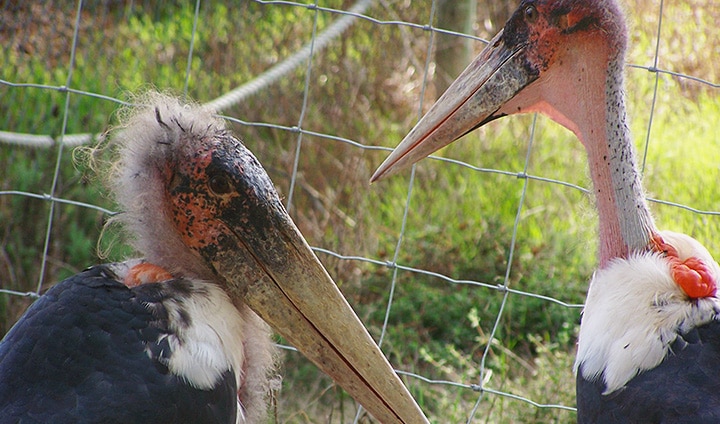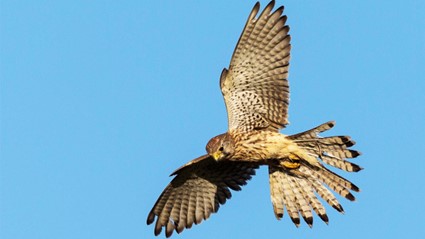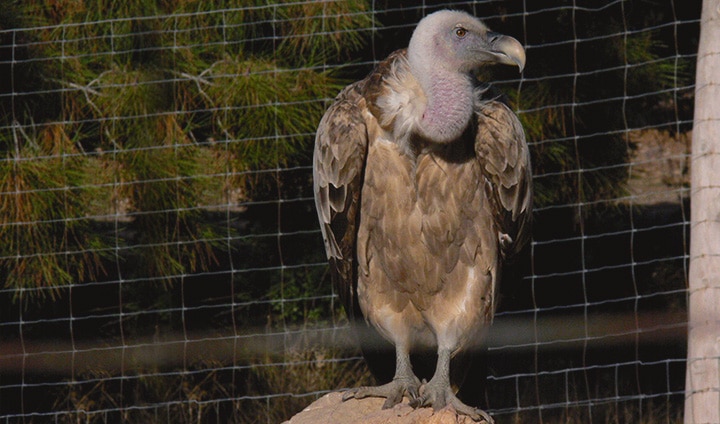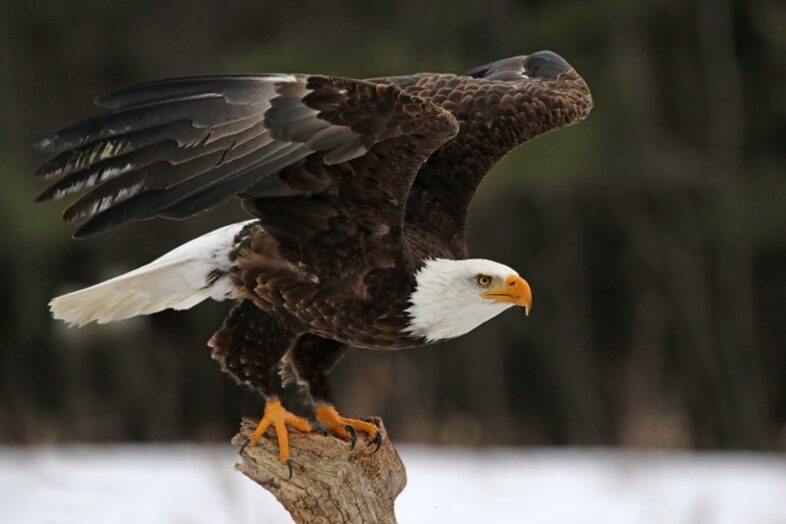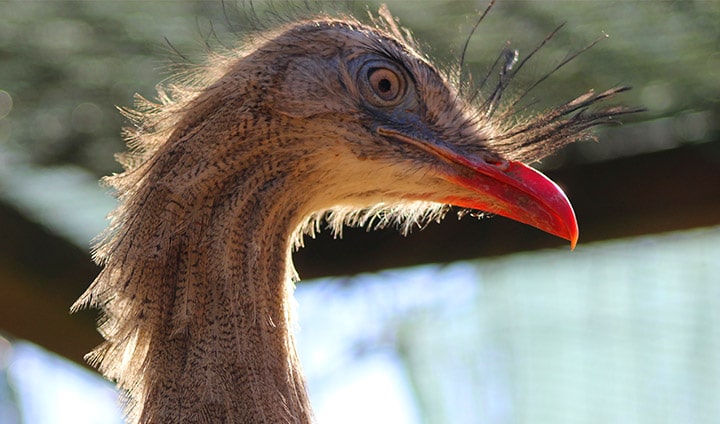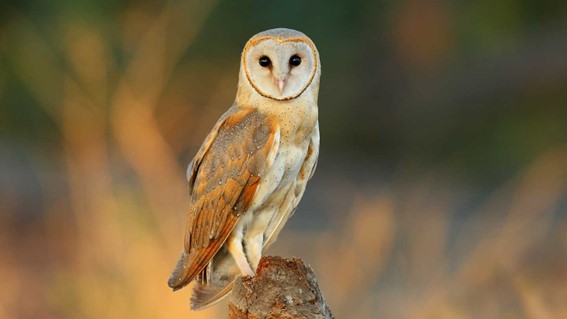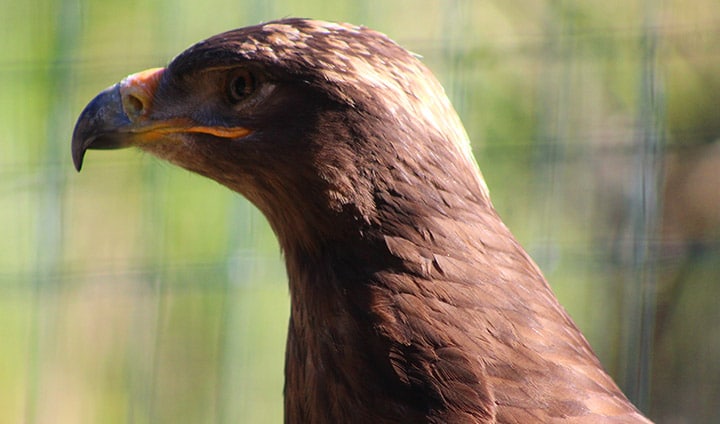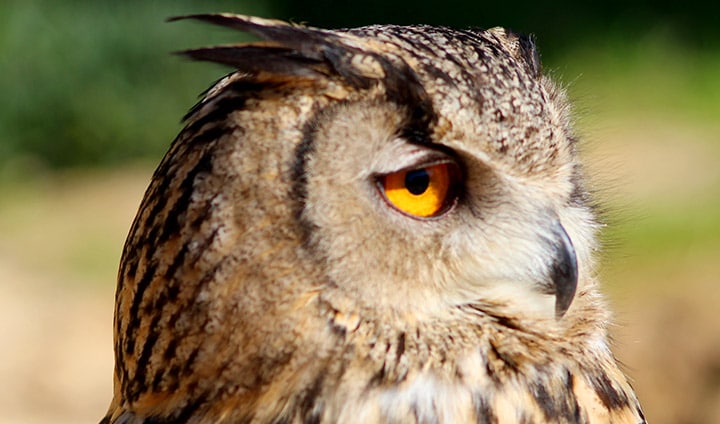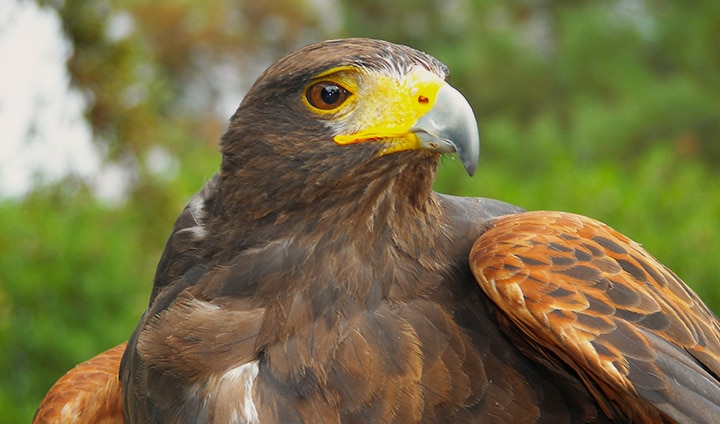Habitat and Geographical Distribution: Wetlands and drylands, savannahs and grasslands. Also often found near landfills and fishing villages.
Tropical Africa from Senegal to Eritrea, Ethiopia and western Somalia, southern Namibia and northern and eastern South Africa.
Diet: Opportunist, consuming any animal matter that it can ingest. Usually a scavenger, but during the reproductive season it will hunt more often, mainly fish, frogs, insects, eggs, small mammals and reptiles.
Reproduction: Breeds in colonies and uses twigs to build the nest in trees where it lays 2-3 eggs. The incubation period is 30 days and the chicks fledge after 95-115 days, reaching adulthood at the age of 4 years.
Behaviour: Usually gather in groups. When feeding on carrion often follow vultures. As with the vultures, marabou storks’ ingestion of carrion and waste plays an important natural function of cleaning areas.
Conservation status: Least Concern (LC), not included in the CITES
Class: Aves
Order: Ciconiiformes
Family: Ciconiidae
Dimensions: 1.15-1.50 m length and 2.25- 2.90 m wingspan.
Weight: 8 -9 kg
Average lifespan in the wild: 25 years
Maximum lifespan in captivity: 45 years



